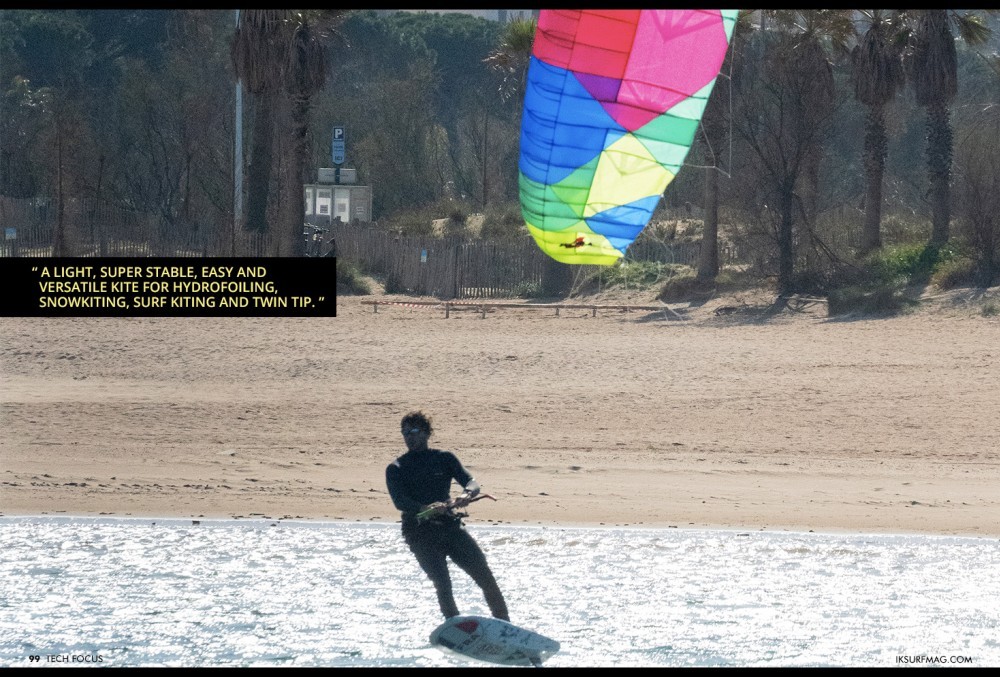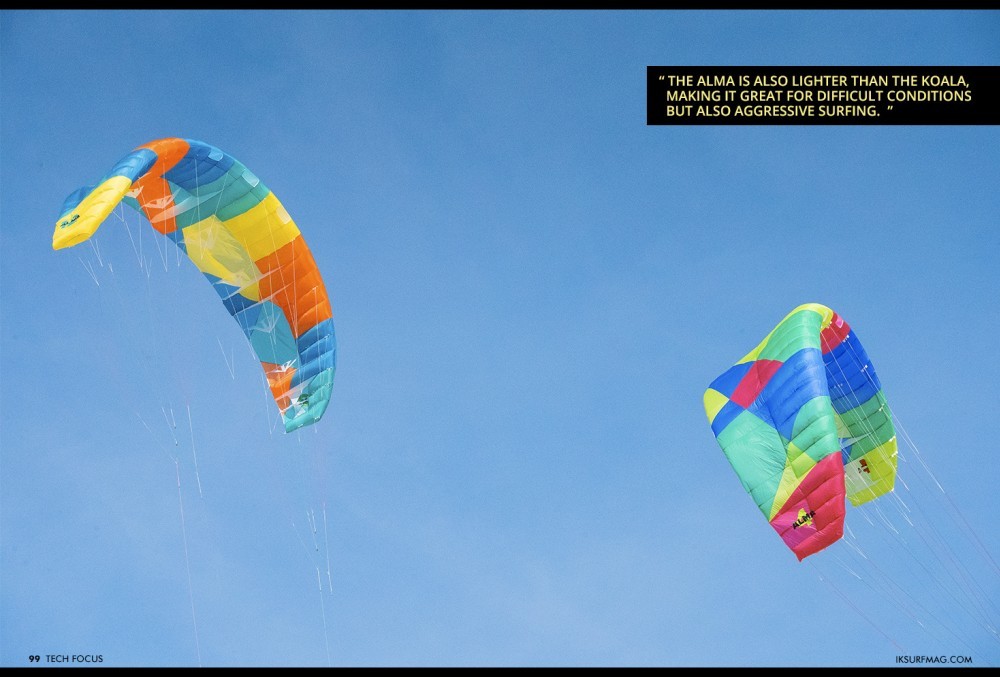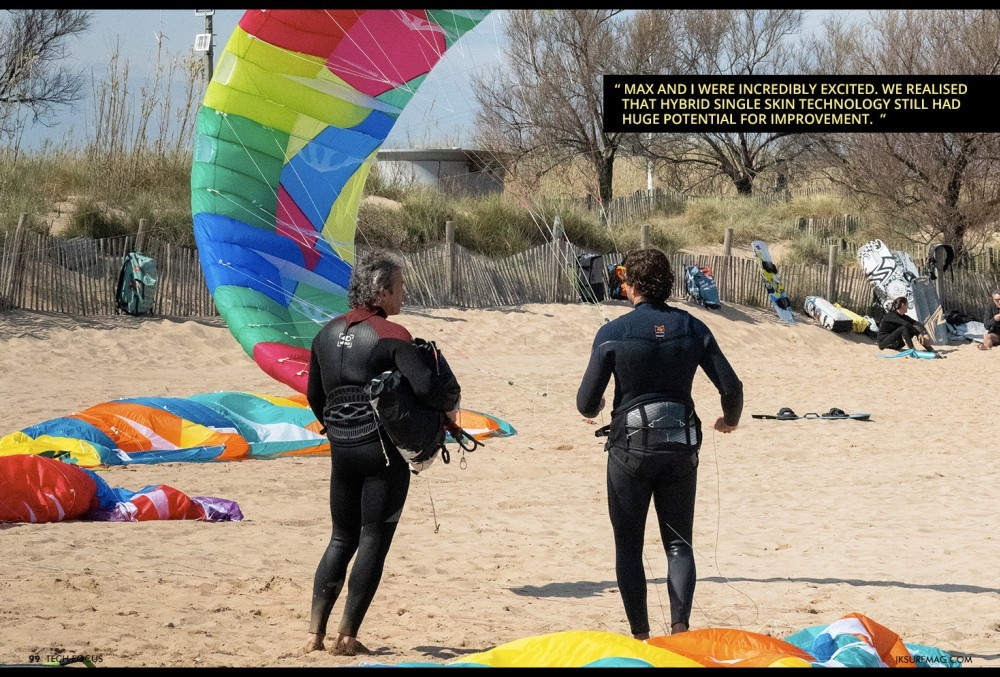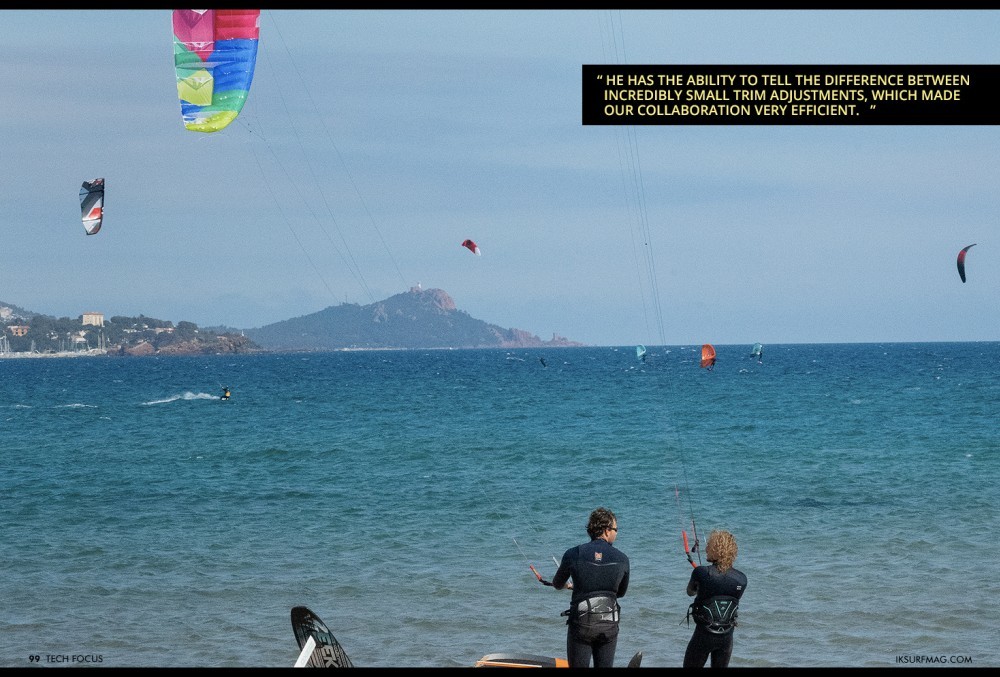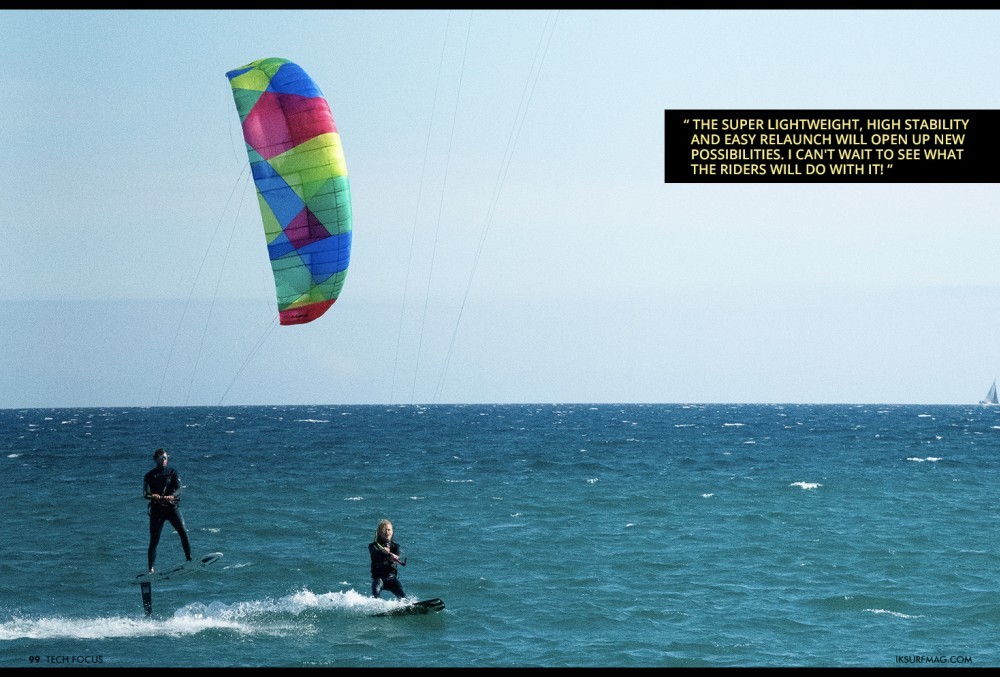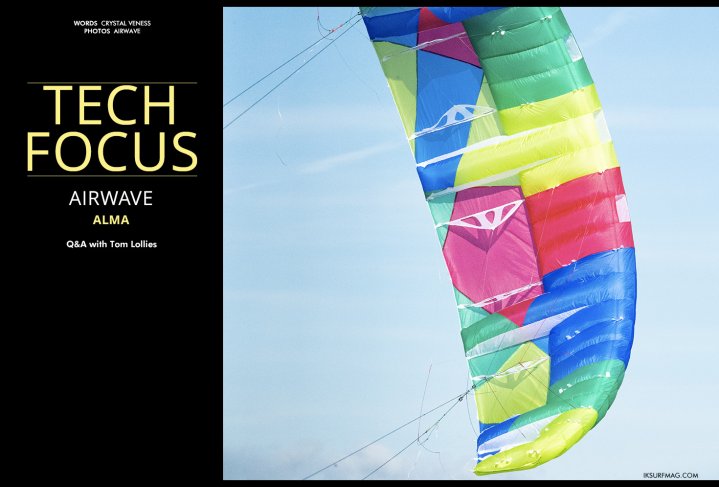
Tech Focus: Airwave Alma
Issue 99 / Tue 6th Jun, 2023
The Airwave Alma, the second kite in the Airwave line, is a kite that is completely unique within the kiteboarding industry; there is nothing else on the market like it! Find out more about this new release in this Q&A with Airwave's Tom Lolies.
Tom, thanks for joining and for the look behind this exciting new design. Give us a quick introduction to the all-new Alma!
Hi Crystal, thank you very much for your questions! The Alma is the first outcome of the new collaboration between multiple world champion Maxime Nocher as a test rider and myself as the design engineer. The Alma is a light, super stable, easy and versatile kite for hydrofoiling, snowkiting, surf kiting and twin tip. It performs well in various riding styles, such as strapless freestyle and freeride, but also in big air.
The Alma is intended to perform in every style and in all conditions, but it will give the very best when hydrofoiling in moderate to strong winds. Thanks to a tight loop, smooth power generation, great drift and good upwind/downwind performance, the Alma really transformed my foiling style.
For those familiar with foil kites but unfamiliar with the hybrid design, can you describe what makes the Alma different from a traditional foil kite?
Traditional foil kites have two skins - the upper and lower surfaces that go all the way to the trailing edge. On our hybrid single skin design, the lower surface stops at 50% of the chord length, leaving only one skin from that point to the trailing edge.
How does it fly compared to the Airwave Koala? What are the key performance differences?
We worked extensively on improving the upwind performance of the kite. Even though the Koala has better upwind angles, the Alma is not far behind, and has better downwind capabilities. Another key difference lies in the handling, where the turn is much, much faster. The combination of good performance and tight turn radius makes it even good for big air and mega loops. Our team rider Maxime Desjardin thinks it is suitable for double loops, so stay tuned for the first-ever double loop with a foil kite!
Also, while the Koala has a more progressive depower (you have to let the kite fly towards a side of the wind window to reduce the pull), the Alma features an immediate depower when you release the bar, which feels similar to a tube kite. The Alma is also lighter than the Koala, making it great for difficult conditions but also aggressive surfing. The drift is impressive! We are happy to say that the Alma keeps the nice bar feel of the Koala and the uncompromising stability.
What are the main benefits or advantages of this hybrid monofoil design?
The hybrid monofoil or hybrid single skin technology is very interesting for the lighter weight, as the cloth consumption is much lower. Most of the riders are now convinced of the incredible benefits of flying lighter kites, such as faster handling, better for hydrofoiling in light winds, and improved drift capabilities when surfing.
Using the right structure design, one can take advantage of the deformable nature of the kite to design it with a morphing aerofoil. Powered up, there is a high camber airfoil giving you all the lift you need. Depowered, the airfoil turns into a low-lift super stable reflex profile - giving you absolute confidence when overpowered, even in the worst conditions. As a result, the power to depower ratio is exceptional.
Finally, the power generation is very smooth. You will feel progressive shifts in the pull force in your harness, whereas an LEI kite, with a much stiffer structure, will give you strong shocks.
How do the 5 full chord inflated closed cells work? What problem do they solve, or what performance benefit do they provide?
The main drawback of single skin and single skin hybrid kites was the constant flutter of the trailing edge when depowered. This resulted in an unpleasant feel in the bar and a very low upwind, pop and hangtime performance. Up to now, most kites like this could hardly be used to ride upwind with a twin tip!
Our design is a cross-over between LEI and single skin. The 5 full chord inflated closed cells work just like the 5 struts of an LEI kite. Here, the struts are inflated by the ram-air intakes and made rigid with long high-density nylon rods. Thus the kite is rigid enough so that the top surface does not flutter, and the whole canopy stays solid and stable even in extremely gusty and strong winds.
What was the inspiration behind the Alma? When you first dreamed up this product, what were you aiming to achieve with the design?
The initial project was to make a simple kite just for hydrofoil cruising in light winds. For that purpose, I started extending my simulation software to single skin kites to better understand the physics of these kites.
When the first prototype came, Max and I were incredibly excited. We realised that hybrid single skin technology still had huge potential for improvement. What if we could make a kite with similar performance compared to the ultra light LEI kites without the incredibly expensive Aluula cloth and without any inflatable bladders, but even lighter and with the nice bar feel of a foil kite?
Proto after proto, we kept on setting the bar higher and higher, seeing that the kite was performing in such a great range of conditions and riding styles.
Is designing a foil kite more similar to designing a paraglider or to a leading edge inflatable kite?
I would say that designing a foil kite is a lot more similar to designing a paraglider in the challenges that we have to face. The main issue is the same: keeping the deformations of the sail under control. Also, the structure is very similar.
Can you tell us a bit about the design process that you went through when creating the Alma?
I first spent quite a lot of time behind the computer running simulations to try to improve the performance of the kite or fix the issues observed in the previous prototype. It may be a lack of depower, an undesired crease on the sail, etc.
Then I send the design to the factory, and we test it with Maxime. Through his years of experience, he has the ability to tell the difference between incredibly small trim adjustments, which made our collaboration very efficient. My challenge was to reproduce the positive effects of a given trim change to try and reproduce them in the simulation program to see if we could optimise even further. It is a unique opportunity to be at the same time a design engineer and also be on the water with one of the best riders in the world for the test sessions!
How much time and how many rounds of prototypes did it take to arrive at the final design?
We use a relatively small number of prototypes. In fact, using simulation and line trim, I really try to get the most out of every proto. Over the course of a year, we made only 7 prototypes. However, on top of the thousands of CPU hours to optimise the design before it was built, a lot of line trimming, cutting and sewing was involved once we received it!
How does it relaunch in water? Are there any special techniques required to relaunch this type of kite?
The Alma accepts different relaunch techniques depending on your skills and background (LEI or foil kite). In more than 12 knots, especially when using a small size, the auto-relaunch will send the kite back up in the air in seconds - you just have to keep tension in the lines. You can also use the one-line relaunch, which does not differ from the standard LEI technique.
My favourite is to use the foil kite technique, which consists in pulling on both back lines and then releasing one, because it is more efficient if you want to relaunch the kite as quickly as possible before the next wave hits!
What would you say to any of our readers who are sceptical about trying a foil kite, particularly a hybrid foil design such as this one?
Some riders do not really want to hear about foil kites, mainly because they don't want to have to deal with the bridles and pulleys and the different launch techniques. To these riders, I would say the following :
- It will only take one session to get adjusted to nearly everything you need to know about foil kites;
- The Alma features a very simple line layout making it a great transition from LEI to flexible kite;
- It is much easier to deal with a few tangled lines from time to time than leaking bladders; and
- Before, foil kites used to be much more expensive than LEI, which is not the case anymore. The Alma tech gives you great performance and yet much simpler construction.
Any last words to share about the all-new Airwave Alma?
I feel that the Alma has great potential to ride on crazy spots in crazy conditions - to explore places that were only thinkable with a wing foil or wind foil up until now. I am now looking at the coastline with a different eye, wondering what to do next.
My technique is to leave with the lines packed, sitting on the foil and hanging on both tips of the kite to get away from the shore. The super lightweight, high stability and easy relaunch will open up new possibilities. I can't wait to see what the riders will do with it!
Also, I can see now that using a small pocket board and one Alma, I can fit my whole gear in a small backpack, and yet keep a very wide range of use. So I am planning to go on a bike-trip kite holiday!
We can't wait to hear about it! Thanks, Tom!
Videos
By IKSURFMAG




